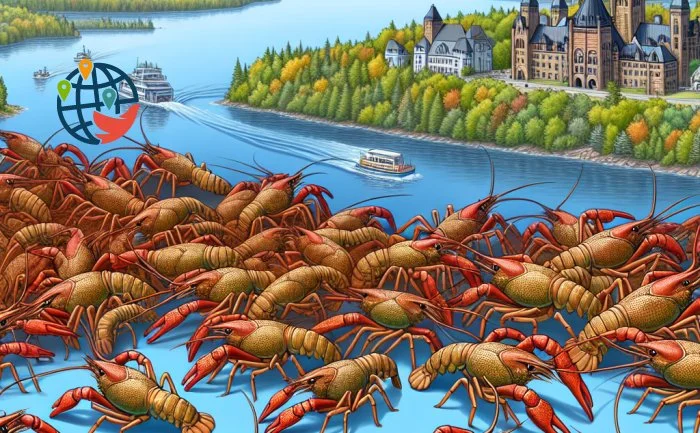Self-cloning crayfishes are taking over Ontario

Environmentalists are sounding the alarm and looking for ways to control the growing population.
The summer of 2023 brought a surprising problem for nature in North America that humans are still struggling to cope with. A unique crayfish species capable of cloning was discovered in a park in Burlington, Ontario.
This is the first recorded occurrence of the marbled crayfish in the continent's wilderness. With this discovery, emergency measures were needed to prevent its spread, as the crayfish had already established themselves in City View Park on the Hamilton border.
What kind of crayfish are these?
Marbled crayfish arrived in North America from Germany in the early 2000s, after having been introduced there in the 1990s. They reproduce asexually, and all known individuals are female, producing genetically identical offspring. This trait has made them popular with owners of predatory aquatic animals, as one crayfish is enough to create food in large numbers.
Why is this a problem?
Brook Schryer, a member of the team responsible for responding to this situation, reported that the population has so far been contained. Dewatering of the pond has been effective and the crayfish are now restricted to that area. However, the presence of an invasive species in the wild is alarming among experts.
Crayfish are capable of displacing native species, changing food chains and transmitting disease, all of which have a negative impact on biodiversity. Scientists fear that growing numbers may carry unknown consequences.
Experts plan to continue monitoring adjacent areas. Schryer, who coordinates the Invasive Species Awareness Program for the Ontario Federation of Anglers and Hunters, stresses that the first appearance of such species is usually due to human activity, which then leads to natural spread.
The marbled crayfish population was officially identified in July, although the first report of them was as early as October 2021. Premek Hamr, a biologist and colleague of Schryer's, played a key role in discovering the species in City View Park. He and Schryer continued their research using eDNA technology, but encounters with the crayfish were infrequent.
How do you deal with them?
Despite winter attempts to control crayfish by draining ponds, scientists expect them to have survived the atypically warm winters. If even a single individual is rescued, this can lead to a dramatic increase in the population.
According to Schryer and Hamr, the population is still limited to the park because the crayfish can't make it through the busy roads that surround it.
Work on crayfish eradication is ongoing, and marbled crayfish and other invasive species are already banned in Ontario under local laws. Hamr and Schryer encourage anyone with marbled crayfish to report them to the appropriate services and never release them into the wild.





























